Author Linda Jane Keegan reviews some new non-fiction from Aotearoa that puts the spotlight on stories of war and disasters, and two books that look at the natural world, from seasons to snappers!
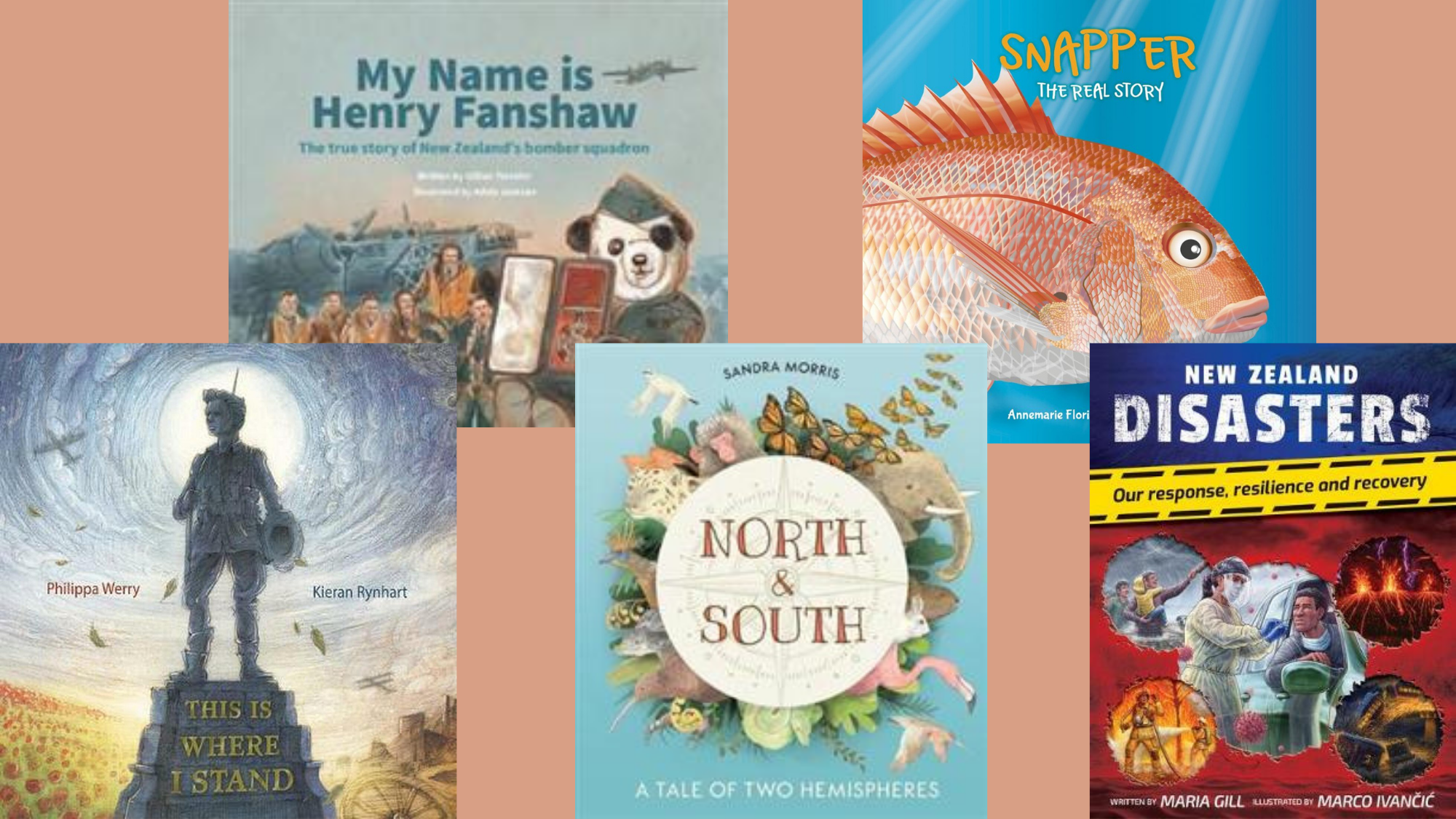
Snapper—The Real Story, by Annemarie Florian & Alistair Hughes (New Holland)
Snapper: The Real Story is a lyrical and informative picture book about one of New Zealand’s best-loved fish. Aimed at four to seven-year-olds, the text leads the reader through the life stages, habitat and biology of the snapper. Importantly, humans are introduced as a huge threat to snapper, with more detail on human impact in the back section.
The language used to weave in scientific information is delightful, and poetic verse flows in between – although some parts flow more smoothly than others. The authors don’t shy away from using technical terms and for the most part explain them in a kid-friendly way. The illustrations are clear and vibrant, with plenty of other sea creatures and plants highlighting the snapper’s habitat. My five-year-old enjoyed spotting the seahorses, jellyfish and flounder.
My five-year-old enjoyed spotting the seahorses, jellyfish and flounder.
I love the inclusion of Māori and Aboriginal names for snapper in the back of the book, but it would have been nice to see this included in the main text. The lack of space for illustration on the back matter pages is a shame because it expands on human impacts and marine reserves which might be lost on younger readers without any visual engagement. However, it does include some really useful links around fishing guidelines and sustainable options for consuming fish.
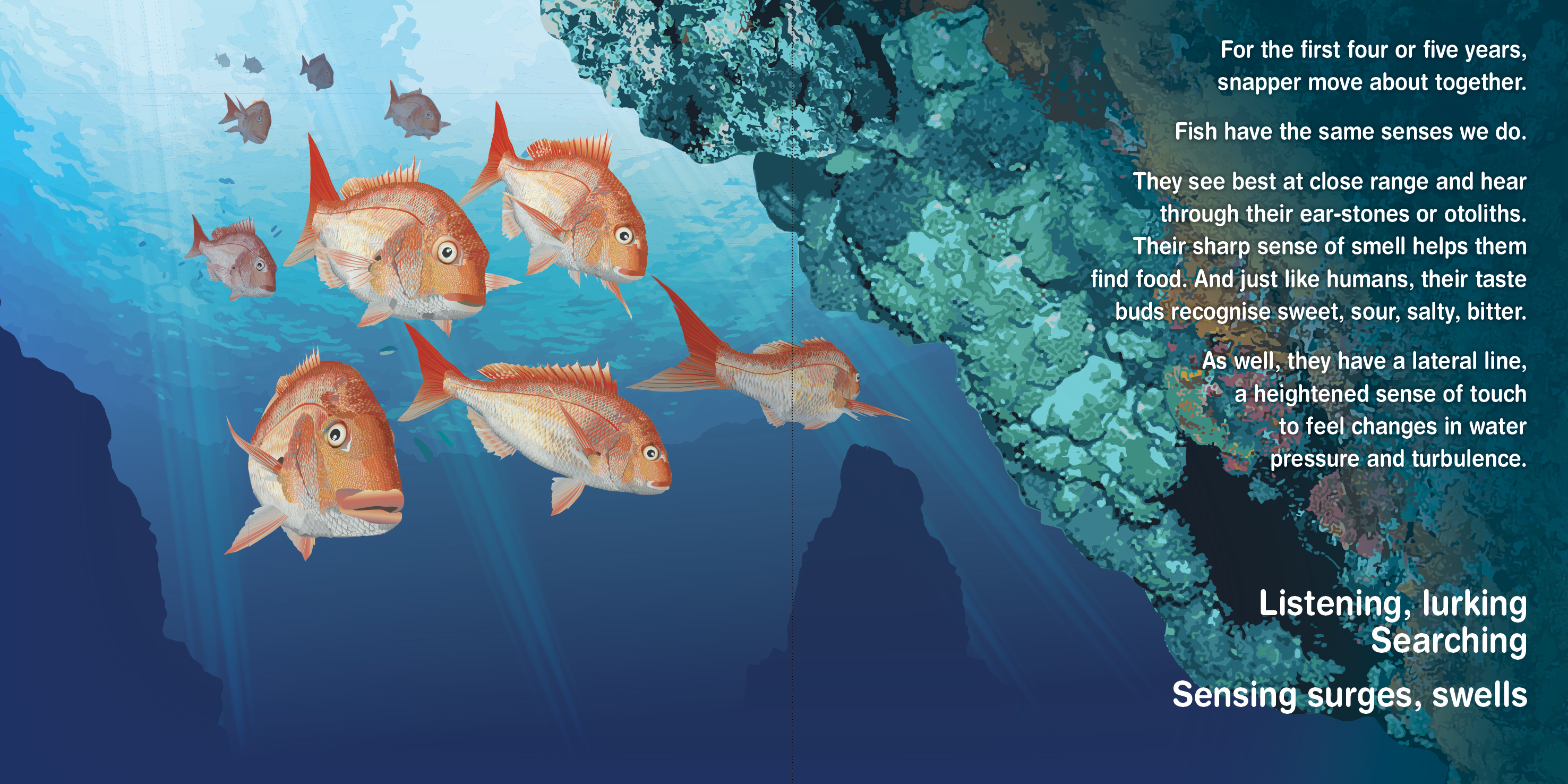
It’s lovely to see a children’s picture book focusing on a specific fish, where birds normally take the stage and fish are usually limited to sections of broader topics. It brings a great sense of appreciation for a well-known species while giving some depth about its life habits.
The publisher’s teacher resource for this book is available here.
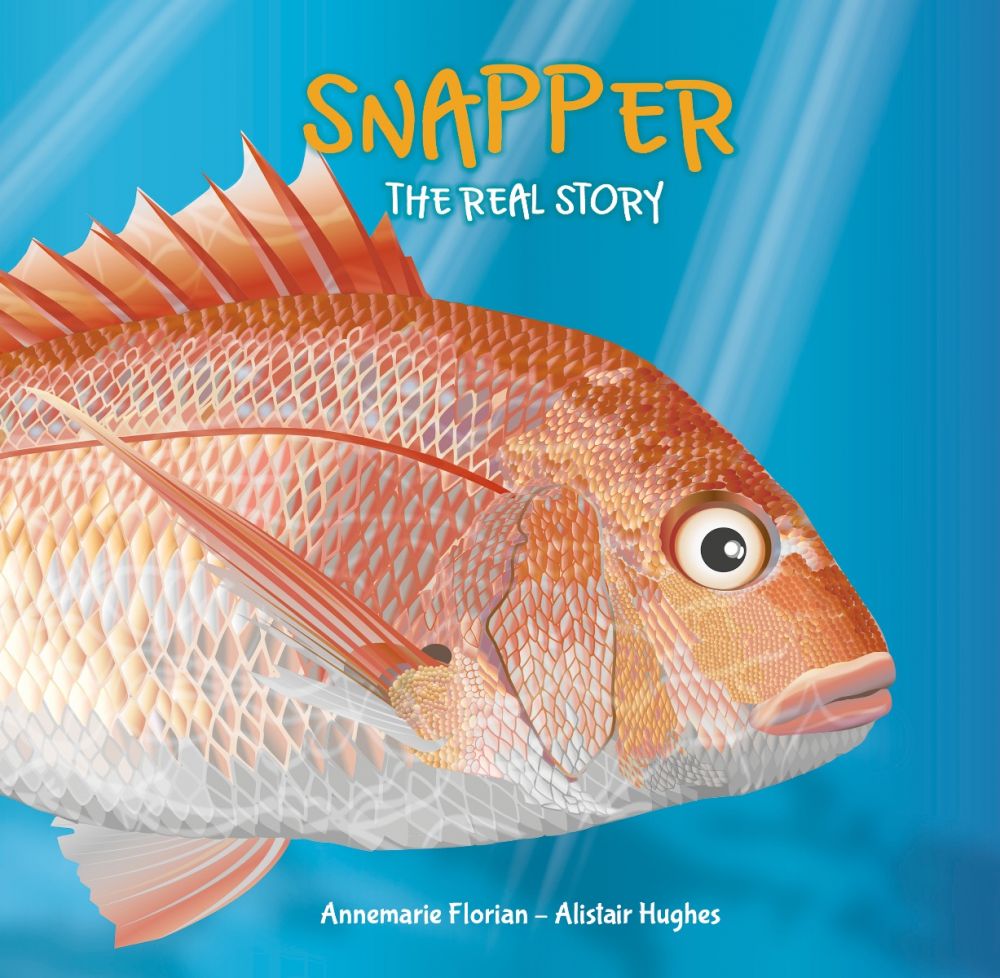
Snapper—the real story
By Annemarie Florian & Alistair Hughes
Published by New Holland
RRP$28.00
North & South—A Tale of Two Hemispheres, by Sandra Morris (Walker Books)
North & South is a beautifully produced and illustrated text and you wouldn’t expect less from Sandra Morris. The eye catching cover with watercolour animals immediately draws you in and keeps you there with lively images throughout the book.
An introduction succinctly explains what is meant by hemispheres and seasons, and touches on the anthropomorphic effects on climate change as well as IUCN* conservation status labels.
The book then takes the reader through a calendar year and the seasons in both hemispheres, with each month focusing on different species with a common theme. The themes range from camouflage to extreme environments to migration, among others. A wide range of animal types are explored, including birds, reptiles, primates, insects and jellyfish. Each double-page spread details some unique facts about an animal, with their conservation status and a map showing where in the world they are found. The author does note that location can vary, especially with migrating animals, and if I was being very picky about it some of the map locations don’t quite match up. However the lovely endpapers make up for this as they map out all the species in the book.
The writing is engaging, and biology concepts are smoothly incorporated into the text. Diet, habitat and reproduction are all covered and the accompanying illustrations delightfully take up a large proportion of the page. A glossary in the back helpfully rounds out the scientific language in the book.
The writing is engaging, and biology concepts are smoothly incorporated into the text.
As a super nature nerd I will gladly admit bias in absolutely loving this book. I think it will easily achieve the author’s intended outcome of exciting children about animal behaviour and bringing into question how the changing climate might impact those animals.
*International Union for Conservation of Nature
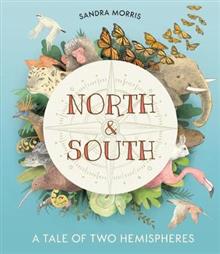
New Zealand Disasters—Our response, resilience and recovery, by Maria Gill, illustrated by Marco Ivančić (Scholastic)
This is a really clear and well-designed approach to natural and human disasters in New Zealand over the last 200 years. This text covers earthquakes, volcanoes, landslides and lahars, tsunamis, cyclones and floods, blizzards, tornadoes, mining accidents, plane and train crashes, shipwrecks, fires and epidemics.
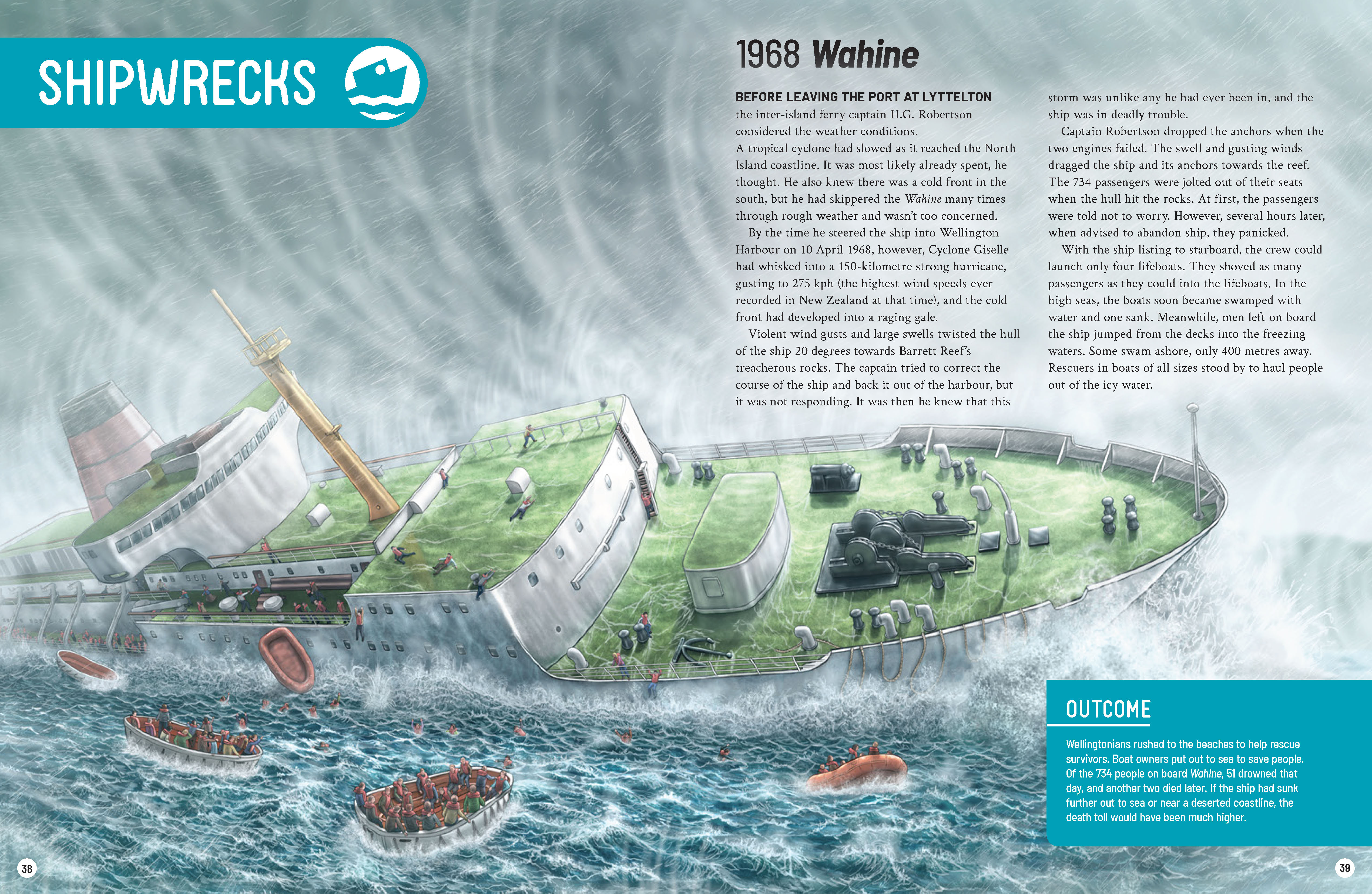
Each section starts with an illustrated retelling of a major event with a pop-out box summarising the outcome and community response. Because I’m an extreme pedant it bothers me immensely that the disasters following aren’t always displayed in chronological order, but I can see how the accompanying text and images lend themselves to that design decision. Photos, diagrams and maps give a useful visual guide, and disaster safety tips pop up in each section.
The concise nature of each section leaves you wanting more: great to encourage readers to research further but I found I wanted more detail. Some of the disaster outcomes touch on avoiding future disaster impacts, but others avoid acknowledging how much of a part human error had to play.
The concise nature of each section leaves you wanting more: great to encourage readers to research further…
My only major qualm with the book is its ‘In Memorium’ section, a single page at the end of the book. It’s in honour of the 2019 Christchurch mosque massacre. While I feel it’s a relevant event – and a well-intentioned gesture – to include in a disasters book, it feels like a token addition that doesn’t go into any detail or centre the voices of people actually affected (most of the page is take up with a quote from Prime Minister Jacinda Adern when she spoke at a vigil). I think this would have been better served in its own section on terrorism or left out entirely.
However, it’s overall a relevant, up-to-date assemblage of disasters up to and including the Covid-19 pandemic. The layout lends itself to easy reading of the text and the images portray the horror and gravity of the disasters without being graphic or gory. It’s an excellent reference for any young reader interested in history, disasters and human resilience.
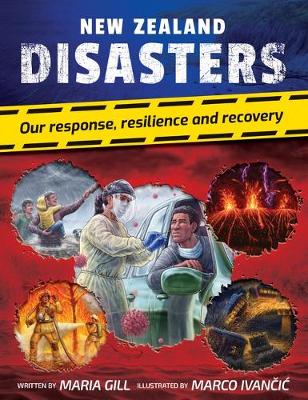
New Zealand Disasters—Our response, resilience and recovery
By Maria Gill
Illustrated by Marco Ivančić
Published by Scholastic
RRP $30.00
My Name is Henry Fanshaw—The true story of New Zealand’s bomber squadron, by Gillian Torckler, illustrated by Adele Jackson (Bateman)
Henry Fanshaw is a teddy bear who flew with the Royal New Zealand Air Force’s No. 75 Squadron, and now is on display in the Air Force Museum of New Zealand in Christchurch. The book is from his point of view and tells the true stories of the squadron’s journeys, heroism, and mistakes during World War II.
The book really shines when it focuses on the smaller human stories of the members of the squadron. The story about Jimmy Ward climbing onto the wing of a mid-air plane and putting out a fire is amazing! And it’s moments like this that remind us that we can’t just look back at wars as a historical record of wins and losses, it’s human lives that we’re talking about. I felt the tone of the book somewhat makes light of its heavy material and thus romanticises war, but the author intends it with all due respect: “I wanted to show Henry as an accessible narrator, hopefully not to glorify war, but to respect the men and women who served and yet reminding them of the civilian casualties.”
The book really shines when it focuses on the smaller human stories of the members of the squadron.
For families interested in war history and New Zealanders’ involvement in it, this is a beautifully presented book covering the squadron’s role in the Blitz of London and the bombing on Cologne, as well as their humanitarian missions. Aviation enthusiasts will likely also enjoy the aircraft depicted throughout the book. The illustration style and colouring suit the mood really well and speech bubbles help to reinforce humans as individuals throughout.
The book finishes with a section going into a bit more detail on some of the aircraft, people, and other aspects of the text. I think particularly the paragraph on the Second World War was excellent for providing context for the book as a whole.
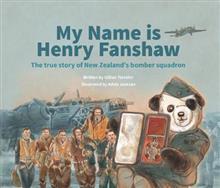
My Name is Henry Fanshaw—The true story of New Zealand’s bomber squadron
By Gillian Torckler
Illustrated by Adele Jackson
Published by Bateman
RRP $25.00
This is Where I Stand, by Philippa Werry, illustrated by Kieran Rynhart (Scholastic)
This is a beautifully written and beautifully illustrated tribute to ANZAC soldiers. Philippa Werry has taken on the heavy theme of war and given it a soft touch without ignoring death, injury and loss. Written from the point of view of a statue of a WWI soldier, the story describes where they are now, memories of the war, Dawn Parades, and the changes happening around them. As Philippa put it, “This book is all about time and memory; how some things change, and others don’t.”
The statue is based on Devonport’s ‘Untidy Soldier’ erected in 1924, but the way it’s written feels like it could be about any soldier, anywhere. As the statue observes people around him there is a feeling of watching over the freedom of others after war. It’s a great book because it leaves space for an adult reading with a child to explain as little or as much as suits them about Gallipoli, or war in general. The overall sense of the book is remembering those who died; it feels like it honours them without glorifying any acts of war. The poetic text invokes a sense of wistfulness without downplaying harsh realities.
It’s a great book because it leaves space for an adult reading with a child to explain as little or as much as suits them about Gallipoli, or war in general.
The illustrations are stunning and, like in My Name is Henry Fanshaw, wonderfully match the mood and tone of the text. The emotions of the people are well-captured and there is a subtle indication of seasons passing. I love how the statue is so creatively placed and coloured on different pages: appearing on every spread, the angle and placement and point of view give plenty visual variety.
Although I don’t personally have a particular interest in war-themed picture books, this is one I would gladly have on my shelf. My five-year-old likes it too; when I asked him what he likes about it, he said “seeing the statue.” Well, it’s on every page, you certainly can’t miss it!
The publisher’s teaching resource is available here.
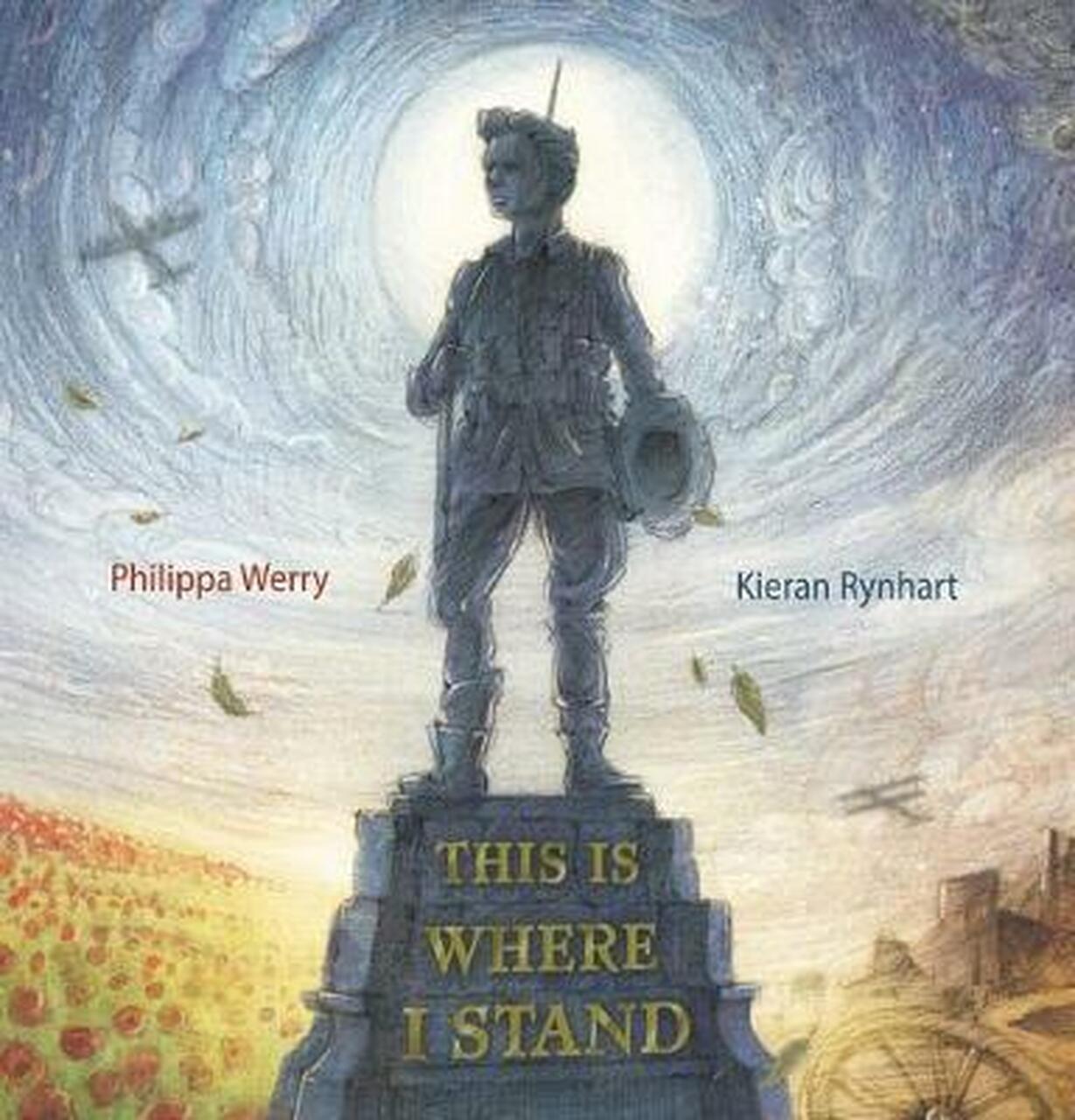
This is where I stand
By Philippa Werry
Illustrated by Kieran Rynhart
Published by Scholastic
RRP $28.00

Linda Jane is a writer of picture books, poetry, essays and science. Her background is varied, including work in ecology, environmental education, summer camps, and a community newspaper. She is Singaporean-Pākehā, queer, and loves leaping into cold bodies of water. She was previously lead editor for The Sapling.



